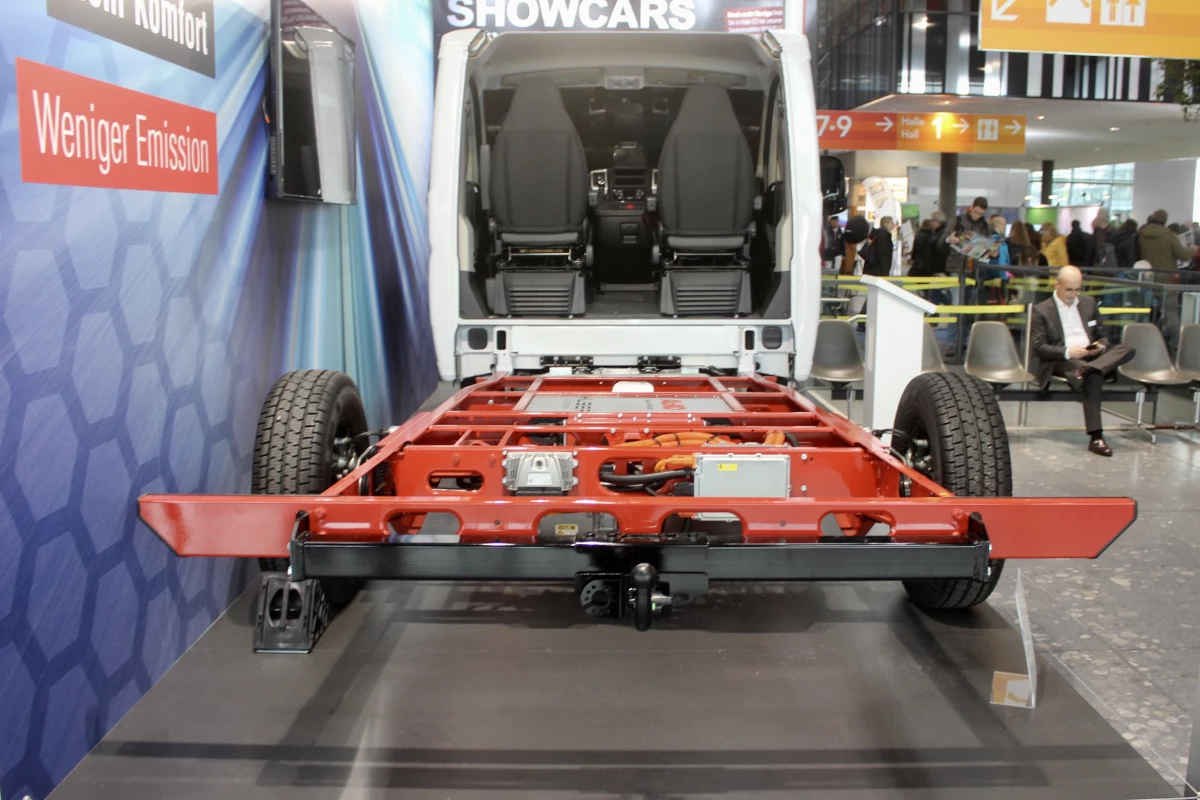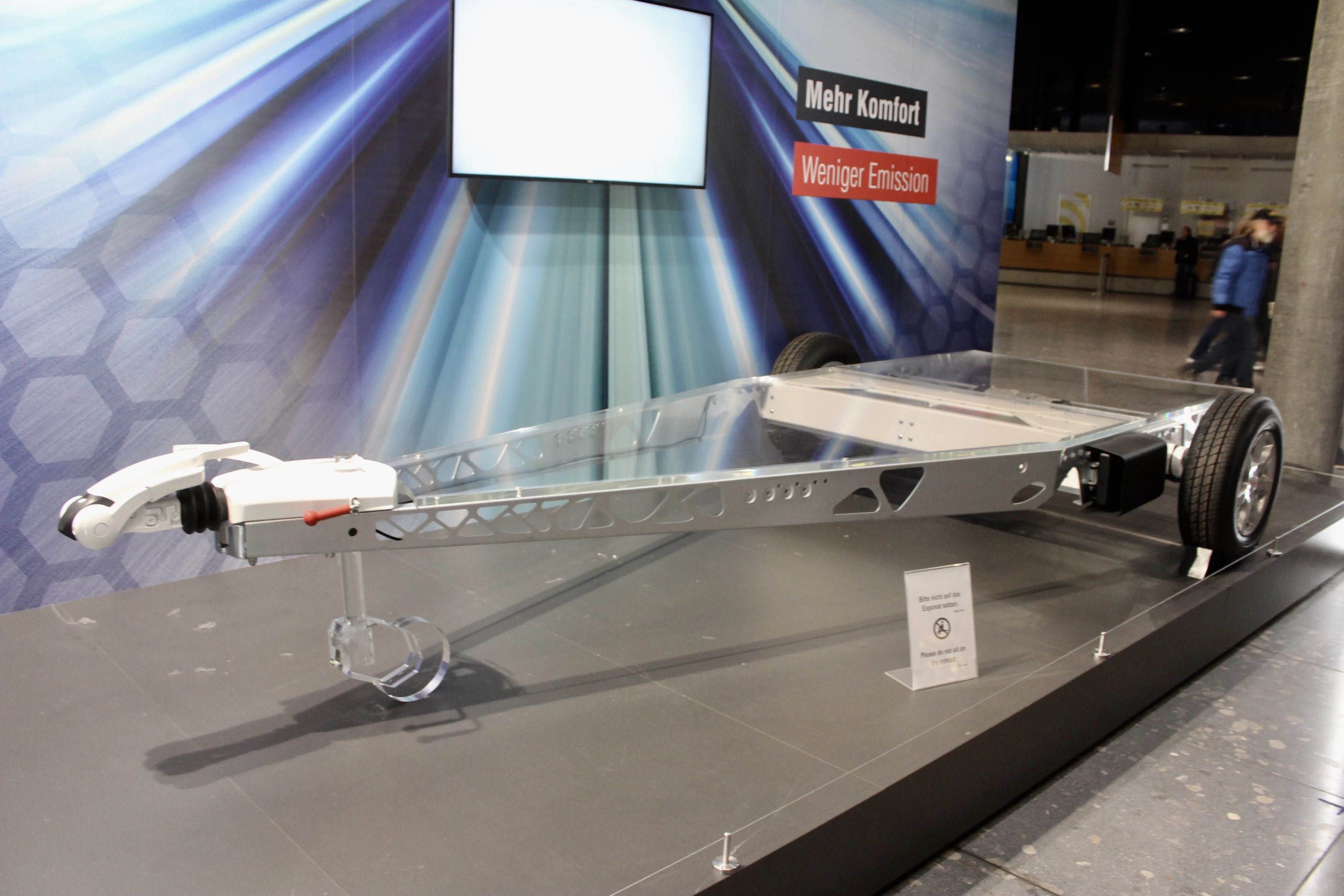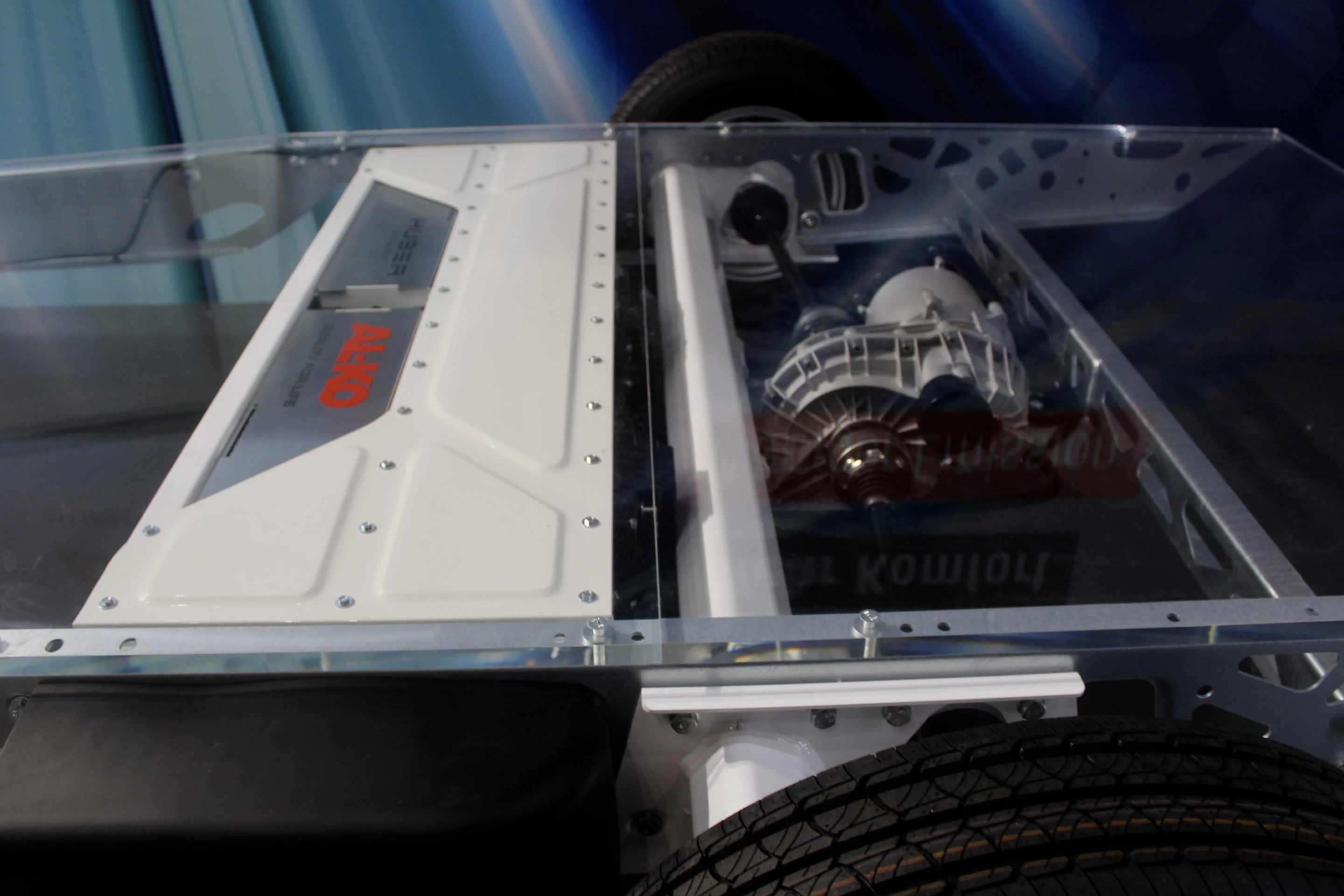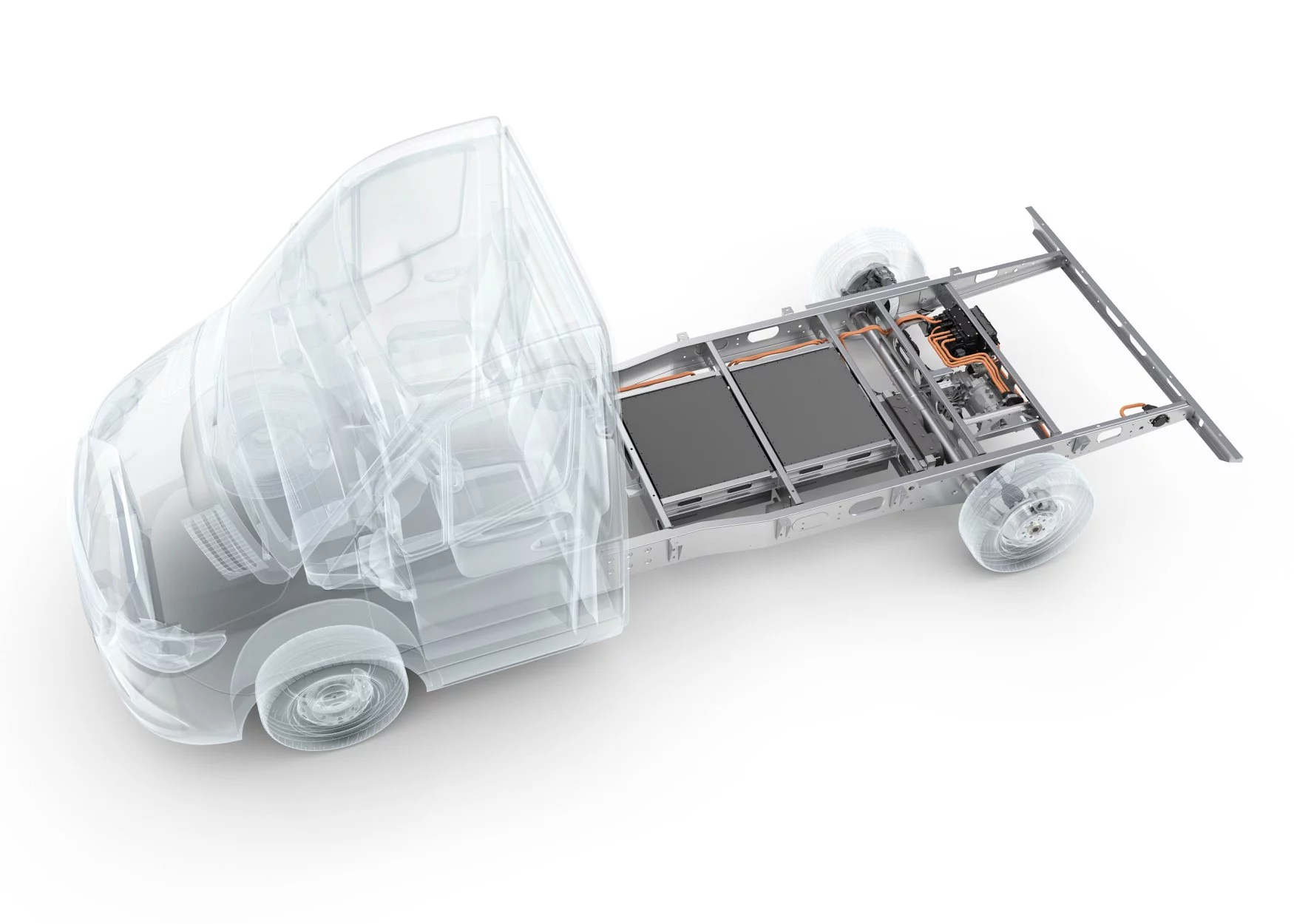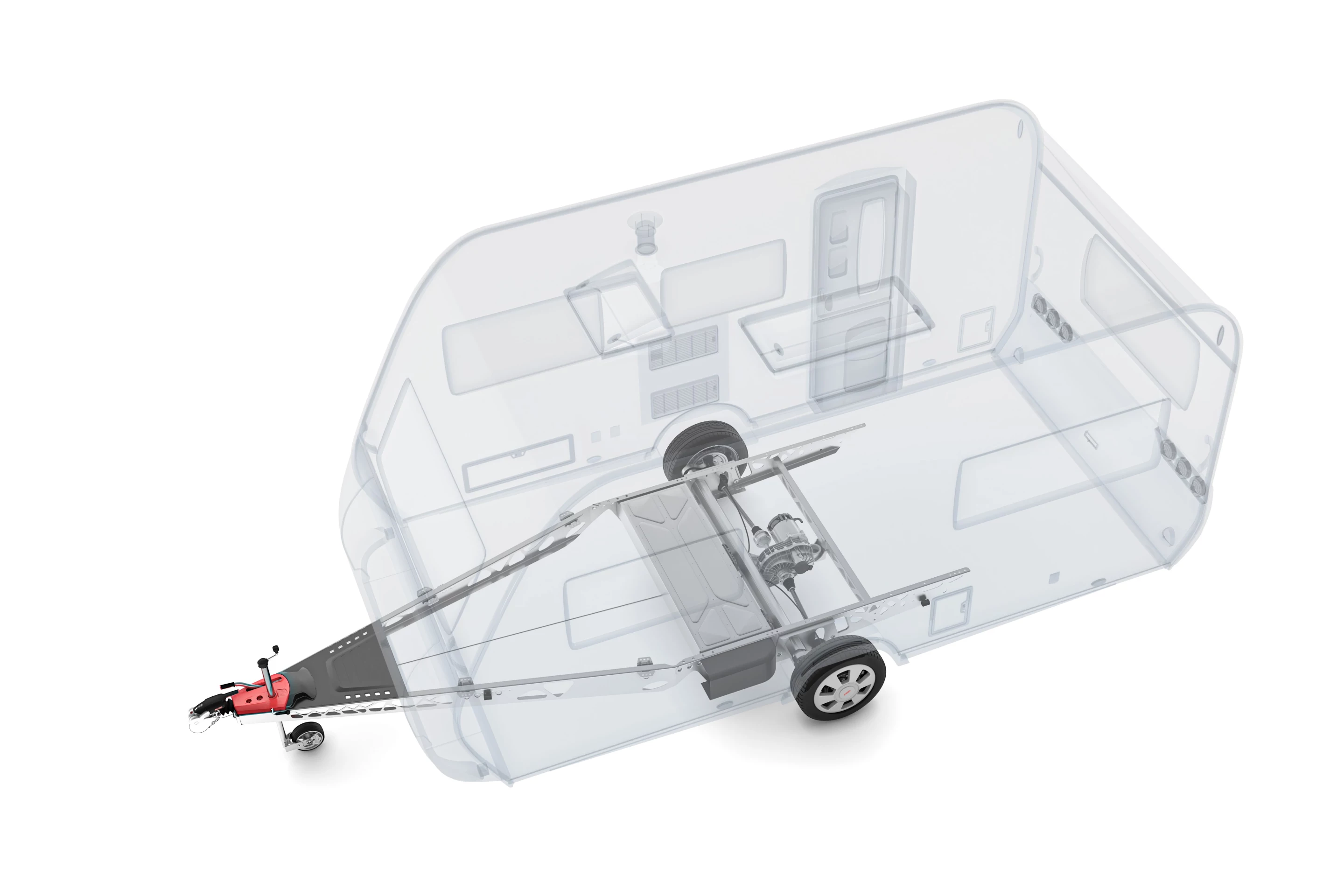The once unfathomable idea of a trailer that drives itself pushes closer and closer to reality. Joining Dethleffs and OzXcorp in working to crack that particular code, RV chassis builder AL-KO is hard at work on its own electric-driven frame. And instead of leaving out the motorized RV segment, it's also developing an electrified motorhome chassis that creates the plug-in hybrid motorhome auto and RV manufacturers have been largely ignoring. Both electrified chassis variants make holiday travel greener by cutting emissions, adding range and creating more holistic power systems.
Moving forward toward a self-driving trailer
It no longer seems a matter of "if" trailers will one day supply their own motive power, but "when." Dethleffs and OzXcorp are working on electrified trailers in Europe and Australia, respectively, and recent reports indicate that Airstream, a Thor Industires/Erwin Hymer cousin of Dethleffs, is interested in bringing the tech over to the US. Meanwhile, Germany's AL-KO Vehicle Technology is working with Huber Automotive to develop its own smart hardware and control software package to make the self-powering trailer a viable reality. The work could have global implications because AL-KO merged with US-based Dexter in 2015 to create DexKo Global, a world leader in trailer axles and chassis components.

After noting that towing a camper can drop an electric vehicle's range by a devastating 70 percent, AL-KO got to work on the Next Generation Caravan Platform (NGCP) to help boost that range considerably, or cut emissions in the case of an ICE-driven tow vehicle. The prototype tech works with caravans up to 7,000 lb (3,175 kg), featuring a 48-V electric axle drive and 10- to 30-kWh battery pack integrated into the structure of the trailer chassis. The system is loaded with sensors, allowing it to adjust e-drive output around driving conditions so the trailer can push part of its own weight and use torque vectoring to improve stability and prevent snaking.
At home and camp, the NGCP system allows the owner to step outside of the tow vehicle, unhitch the trailer and remotely drive the trailer using a smartphone app. So, he or she can slow-roll the trailer out of the garage and line it up with the tow vehicle for hitching and later unhitch and remotely maneuver it onto the RV pad at camp.
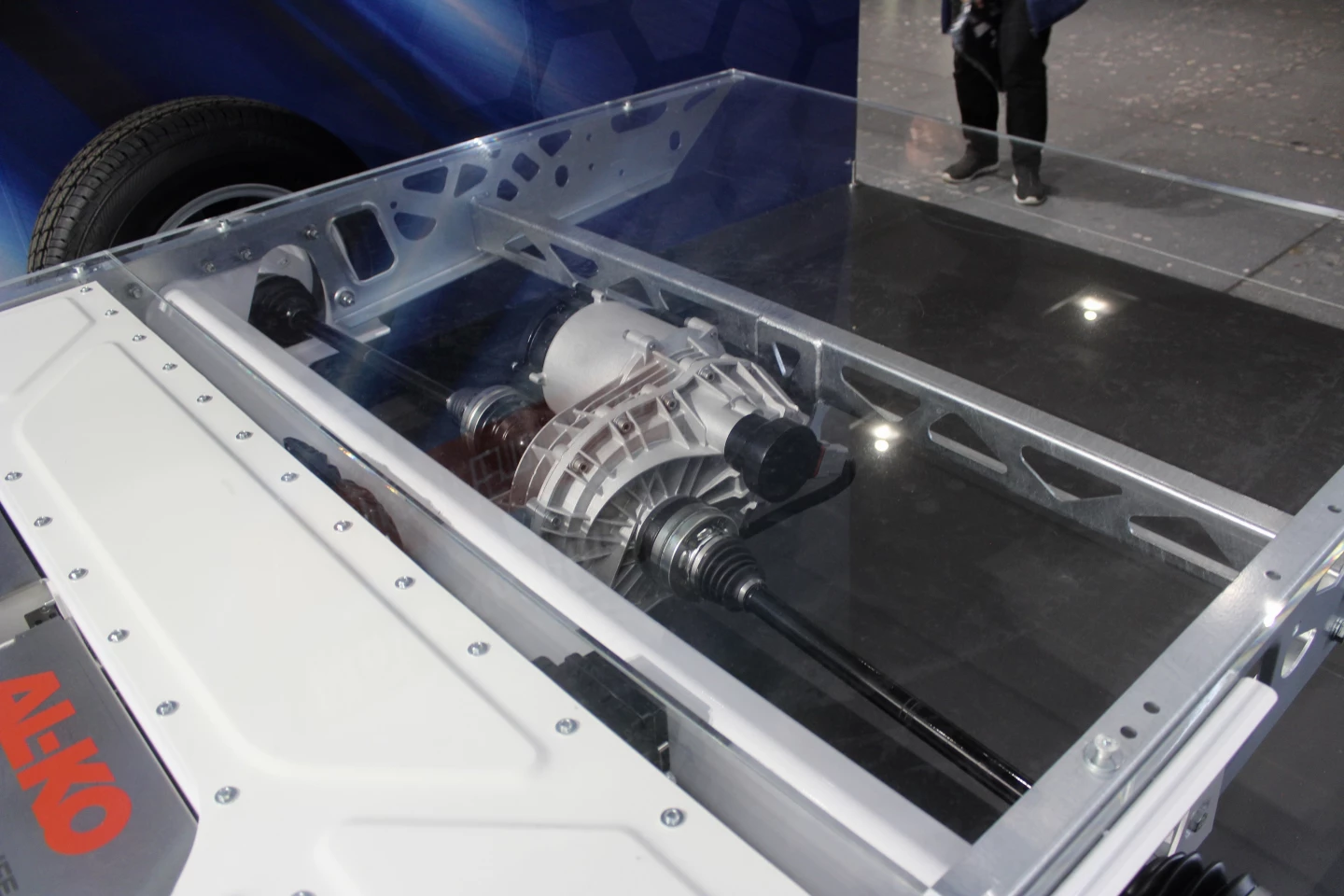
The NGCP battery is meant to be scalable for use with various size trailers and charges via an exterior plug and brake recuperation. The latter helps not only in charging the battery but also in trailer self-braking during steep descents. The battery also doubles as an off-grid camp power source for equipment like electric refrigerators, lighting and cooktops.
The connected NGCP platform also includes anti-theft immobilization, geolocation and remote battery monitoring. And as the 4.5-minute clip below shows, AL-KO isn't developing it solely for camper design but also for cargo and horse trailers.
Bypassing the automaker in creating a clean, full-range plug-in hybrid motorhome
The typical motorhome relies solely on the powertrain offerings of the base vehicle manufacturer, and given the lack of plug-in hybrid base vehicles, those options tend to be a list of gas and/or diesel engines. Plug-in hybrid motorhome powertrains remain scarce, despite the attractive promise of fuel economy improvements without the ridiculously low ranges associated with all-electric powertrains. Dethleffs launched the first production-scale plug-in hybrid camper van just last year, and now AL-KO is helping get larger plug-in motorhomes on roadways by securing its own electric drive chassis to motorhome cabs, starting with Europe's most popular, the Fiat Ducato.
Using its existing hot-dip galvanized lightweight steel ladder chassis, AL-KO fills the space between cross members with a battery pack and 121-hp (90-kW) electrified axle to create what it calls the Hybrid Power Chassis (HCP). That output may sound modest, but Ducato motorhome engine options start at 120 hp, so the HCP effectively doubles available power.

But the Hybrid Power drive isn't about piling up power and torque, save for its ability to quicken acceleration. What it's really about is a cleaner, more efficient ride. When switched to full-electric mode, the HCP can drive the motorhome for between 31 and 62 miles (50 and 100 km) without a puff of tailpipe emissions. In hybrid mode, it blends with the ICE for a fuel savings of up to 30 percent. The standard combustion engine, meanwhile, ensures that HCP motorhome owners always enjoy a full driving range and fast, easy gas fill-ups.
The HCP includes a reserve mode that cuts the electric drive off to recharge the battery and reserve power for other uses. The battery charges from both brake recuperation and a 7-kW or optional 22-kW charger. At camp, the battery serves as a leisure battery, powering electrical equipment.
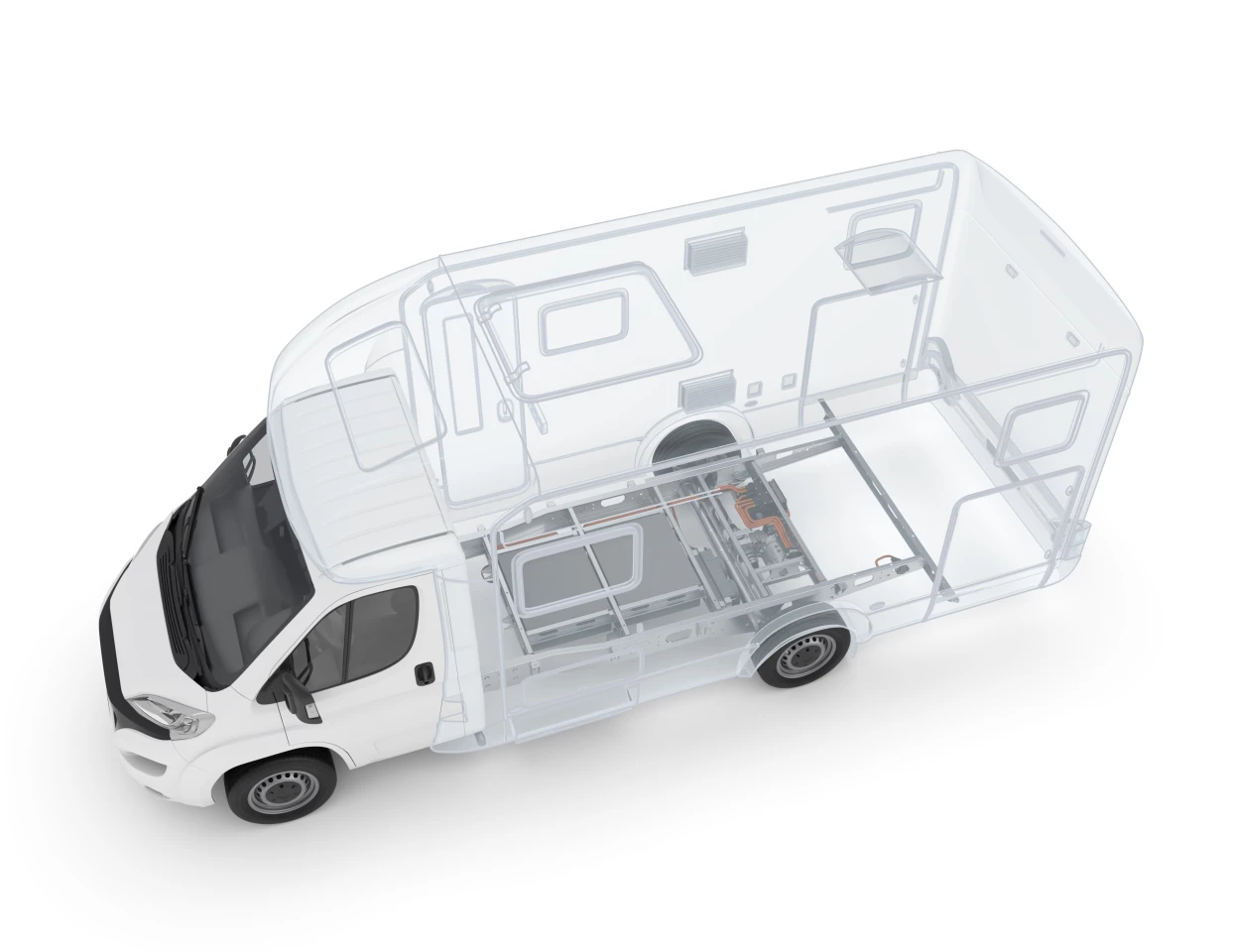
Beyond its primary hybridizing drive functionality, the HPC also adds 4x4 capabilities, kicking the rear e-drive on when needed to give the front-driven wheels a little help in maintaining traction. AL-KO is also working to create a system that will factor in GPS data to automatically switch over to pure-electric mode when entering designated environmental zones.
The video clip below provides a nice visualization of the HPC components and operation.
AL-KO expects to have the HPC system approved and ready for Fiat Ducato motorhome manufacturers by the second half of 2020. The company had both the NGCP trailer chassis and Hybrid Power Chassis on display at last month's CMT Stuttgart show, and we'll be looking for updated designs and info at the Düsseldorf Caravan Salon later this year.
Source: AL-KO Vehicle Technology
